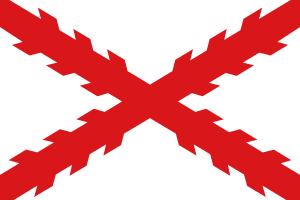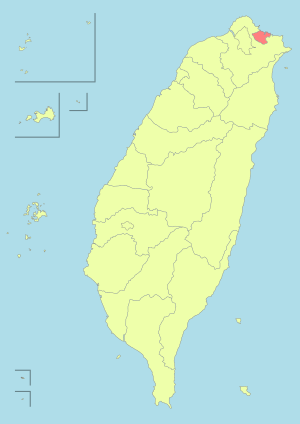Spanish expedition to Formosa facts for kids
Quick facts for kids Formosa Expedition |
|||||||
|---|---|---|---|---|---|---|---|
 Flag of New Spain. |
|||||||
|
|||||||
| Belligerents | |||||||
| Kingdom of Middag | |||||||
| Strength | |||||||
| 200 Spaniards and 400 native Filipinos | |||||||
The Spanish expedition to Formosa was a journey made by Spanish people from Manila, Philippines in 1626. It was the Spanish answer to the Dutch building settlements on Formosa. Formosa is an island now known as Taiwan. The Spanish worked with the Portuguese on this trip. They wanted to attract Chinese traders. They also wanted to stop the Dutch from becoming too powerful in Asia.
Why the Spanish Went to Formosa
The Dutch East India Company was a big trading company. In 1622, they tried to set up a trading post. This was on the Penghu Islands, also called the Pescadores. But the Ming government in China made them leave.
In 1624, the Dutch company built a strong fort. It was called Fort Zeelandia. This fort was on a small island called Tayouan. Today, Tayouan is part of Anping, Tainan on the main island.
A Scottish agent named David Wright lived on Formosa in the 1650s. He worked for the Dutch company. He said the low parts of the island had 11 different local groups. Some of these groups had only two villages. Others had as many as 72 villages. Some groups were controlled by the Dutch. Others stayed independent. The Dutch company started bringing workers from Fujian in China and from Penghu. Many of these workers stayed and lived on the island.
The Expedition to Formosa
On May 5, 1626, the Spanish first landed on Formosa. This was ordered by Fernándo de Silva, who was the top Spanish leader in the Philippines. They landed at Cape Santiago. But they decided this spot was not good for defense.
So, the Spanish kept going west along the coast. They finally reached Keelung. Keelung had a deep and safe harbor. It also had a small island at the entrance. This made it a perfect place to build their first settlement. They named it Santisima Trinidad.
They built forts on the small island and around the harbor. Hundreds of Spanish and native Filipino soldiers guarded the forts. These soldiers came from the Philippines. The Spanish wanted this colony to protect their trade. They also wanted to protect Portuguese trade from the Dutch base in southern Taiwan.
What Happened Next
The Spanish built Fort San Domingo in 1629. This was in Tamsui. They built it to make their power in Formosa even stronger. The fort's current location is named after it.
One night in 1636, local people attacked the fort. They were angry about the taxes the Spanish governor had put on them. They successfully destroyed the fort. In 1637, the Spanish rebuilt the fort. They used stone and made the walls very tall, over twenty feet high.
However, in August 1642, the Dutch came back to Keelung. They had four large ships and several smaller ones. They also had about 369 Dutch soldiers. A mix of Spanish soldiers, local people, and Pampangos from the Philippines fought them. They held off the Dutch for six days. But in the end, they were defeated. They returned to Manila and gave up their flags and what little cannons they had left.
Sebastián Hurtado de Corcuera was the governor of the Philippines. Many people blamed him for losing Formosa. He was even put on trial and jailed for five years in the Philippines. Historians have often criticized him for this loss. But other things also played a part. The Dutch Empire was growing stronger in Southeast Asia. Also, the Spanish Empire was having money problems. These were big reasons why Formosa was lost.
See also
 In Spanish: Conquista española de Taiwán para niños
In Spanish: Conquista española de Taiwán para niños
- Spanish Formosa
- Spanish Filipino
- Dutch Formosa
- Spanish East Indies
- Category:History of the Philippines (1565–1898), Spanish colonial period in the Philippines


